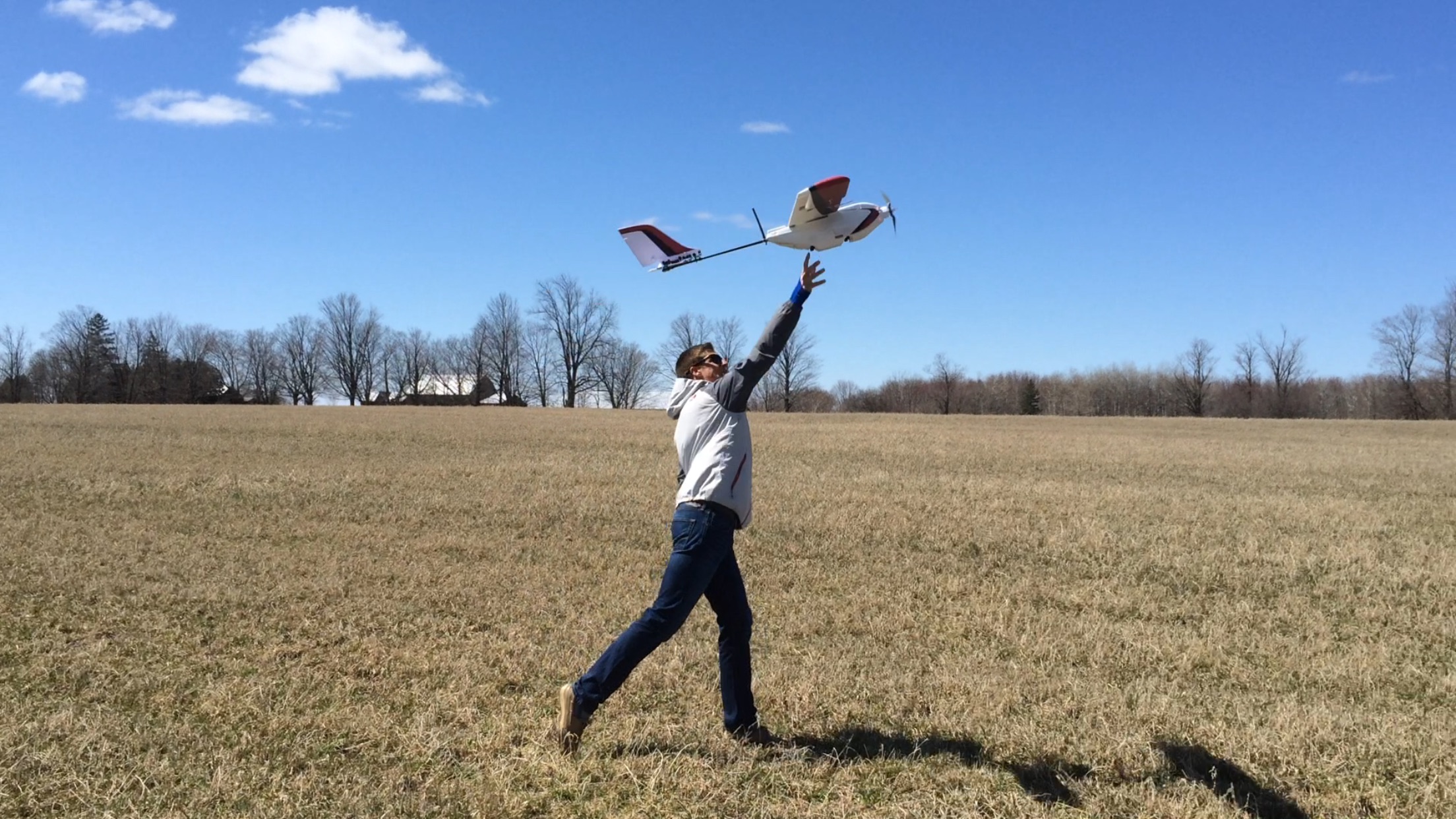Over the past few years, unmanned aerial vehicles (UAVs), commonly referred to as drones, have grown in popularity within the agriculture industry. Farmers are using this technology to monitor the status of their crops, acquire data about the environment and protect their crops from disease and wildlife. UAVs are gaining traction in the tree care industry as well, and arborists are determining how the technology fits into their expanding business capacities.
We read the two articles below in Tree Care Industry (TCI) Magazine and wanted to learn more, so we talked with Alex Moss from PrecisionHawk, a drone and aerial data technology company. Below is an overview of our conversation about this emerging trend.
Use of Unmanned Aerial Vehicles in Arboriculture: Toward New Heights
Drones in Tree Care: Who is Using Them, How and Why?

Q: What exactly is a drone?
A: A drone is an unmanned aerial vehicle (UAV) or, basically, a flying robot. Drones can be controlled remotely or function autonomously through the use of software and GPS systems.
Q: What are some common uses for drones today?
A: Agriculture, insurance and natural disaster response, search and rescue, mining, research, infrastructure surveying, and, of course, forestry are also beginning to use drones on a larger scale. This trend is expected to grow even more when the Federal Aviation Administration (FAA) sets concrete regulations, likely sometime in 2016.
Q: How can a tree care business benefit from using drone technology and data analyzing software?
A: The list of ways arborists can use drone technology is growing all the time. Several examples include:
- Marketing and sales
- Safety: Ensure rigging and equipment are secure, procedures are being followed
- Limit unnecessary and potentially dangerous climbs
- Forest classification and inventory
- Tree height monitoring
- Plant disease and detection
- Detection of power lines in dense areas where the lines and trees are close together
- Historical aerial imagery and change detection
Q: What are the different types of drones and the benefits of each?
A: There are two types of drones: fixed-wing and rotor-wing.
Fixed-wing drones basically look like model airplanes. They can fly over larger distances, making them a better choice for larger points of interest, since you can fly over hundreds of acres in one flight. Tree care professionals might use fixed-wing drones to acquire inventory of trees, to create imaging and mapping, and to conduct environmental assessments.
The other choice is rotor-wing drones. This is probably what people think of when they hear the word drone. Rotary is great for hovering and seeing something very close up. They’re also better for smaller, more enclosed places. Rotor-wing technology can also benefit a tree care business through plant health monitoring and inspection.
Q: How do I utilize the data captured from the drone?
A: A UAV is a vehicle to capture data, so the benefits of this technology rely on advanced software and analytics for compiling and analyzing the data once it’s collected. The software that’s making sense of all that information and telling us what’s really going on, that’s going to make all the difference in how we use UAV technology in the years to come.
To address this growing demand, last year, we released the “Algorithm Marketplace” through our proprietary data platform, DataMapper. An app store for drone data, the Algorithm Marketplace allows users to upload imagery and select various analysis applications. Examples of current apps include plant counting, volume measurements, vegetative health readings and much more.
Q: Why don’t I see drones just flying around when I’m walking down the street?
A: Right now, drones are not permitted to fly over populated areas. This might change as safety solutions and regulations are put into place. For now, though, if there’s a decent number of people in your area, you won’t really see drones around.
Q: What are some of the other regulations in drone technology?
A: It’s important to stay up to date on current FAA and local regulations. The FAA oversees federal regulations on drone technology, so if you’re looking for information about the rules of owning these devices, that’s a good place to start.
One of the most important, and newest, regulations to affect the industry is that if you buy a drone, whether it’s for commercial or hobby use, you have to register it in the FAA’s database for UAVs.
Q: Are there differences in regulations for commercial and hobbyist use of drones?
A: Yes. If you are using a drone for recreational use, you just have to register it and abide by the listed rules including not flying near populated areas. Commercial business owners are required to operate the drone aircraft within the FAA’s Civil Operations regulations, which means they must receive exemption status. [More information on that exemption status can be found here.]

Q: What do tree care professionals need to consider before purchasing a UAV?
A: Make sure that you’ve done your research on the regulations, you’ve gotten your exemption and you abide by all the rules.
Most importantly, you need to ask yourself, “What am I trying to achieve?” If you’re just trying to see an aerial depiction of a geographic location, satellite imagery and manned aircraft are still viable options. For something that’s higher quality, can involve different sensor payloads and can be processed with advanced analytical software, a drone may be the solution.
It really comes down to what you’re trying to achieve and then abiding by the rules to achieve success for your company in the safest way possible.
Advice or suggestions provided by Alex Moss are statements of general applicability that may or may not apply to businesses, whose circumstances and operations may vary. The opinions of Mr. Moss do not necessarily reflect the opinions of Vermeer Corporation, its dealers or its affiliates.
